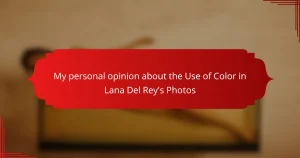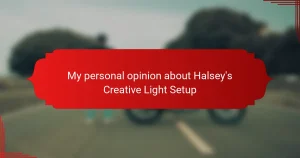Key takeaways
- Understanding lighting is essential for capturing the mood and energy of live performances, using techniques like backlighting and spotlighting to enhance images.
- Using fast shutter speeds and experimenting with angles can help freeze movement and create dynamic compositions during concerts.
- Anticipating the artist’s actions and being flexible allows photographers to capture spontaneous and emotive moments that tell a compelling story.
- Effective concert photography merges light and movement, creating a visual narrative that reflects the performance’s emotional impact and atmosphere.
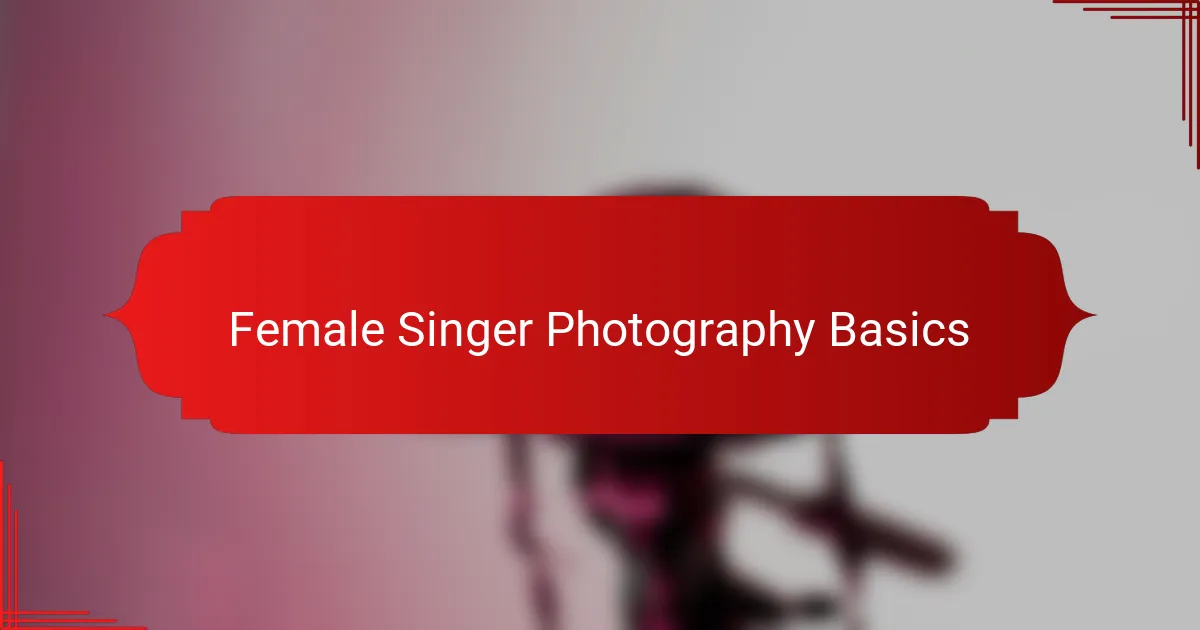
Female Singer Photography Basics
When capturing female singers in action, understanding the interaction between light and movement is crucial. I remember feeling the excitement during Janelle Monáe’s concert, where every flick of her wrist seemed to create its own dance with the light. That dynamic energy is something I strive to convey in my photos, showcasing not just the artist but the emotion and atmosphere of the performance.
To achieve stunning results in female singer photography, here are some foundational tips:
- Know Your Lighting: Natural light or stage lighting can dramatically affect the mood.
- Use a Fast Shutter Speed: This helps freeze movement and prevent blur, especially during energetic performances.
- Experiment with Angles: Different perspectives can add depth and interest to your images.
- Capture Emotion: Look for candid moments that showcase the artist’s connection to the music and audience.
- Be Ready to Adapt: Live performances are unpredictable; being flexible allows you to capture spontaneous moments.
I find that being present and attuned to the environment lets me anticipate the perfect shot. Each concert is a new story waiting to unfold.

Techniques for Capturing Performances
One of my favorite techniques for capturing the magic of live performances is leveraging the unique qualities of stage lighting. I remember during Janelle Monáe’s concert, the dynamic play of colored lights created a mesmerizing backdrop that highlighted every movement. Have you ever noticed how certain light can transform a moment? I encourage you to experiment with this aspect, using your camera settings to ensure you capture both the artist’s movements and the vibrant colors.
Another essential tip is to anticipate the performer’s actions. I’ve found that the best shots often come from being ready for those spontaneous moments when the artist connects with the audience. Think about it—how often do you find yourself completely absorbed in a powerful performance? By sensing the rhythm and energy of the show, you’re more likely to capture those fleeting expressions and gestures that tell a deeper story.
Finally, don’t shy away from using varied angles. I recall crouching low during a particularly energetic song, which allowed me to capture Janelle Monáe emerging dramatically from the shadows. How does changing your perspective impact the image? It can completely alter the narrative you create, making every photograph a part of the performance’s visual journey. So trust your instincts, and don’t hesitate to explore unconventional viewpoints!
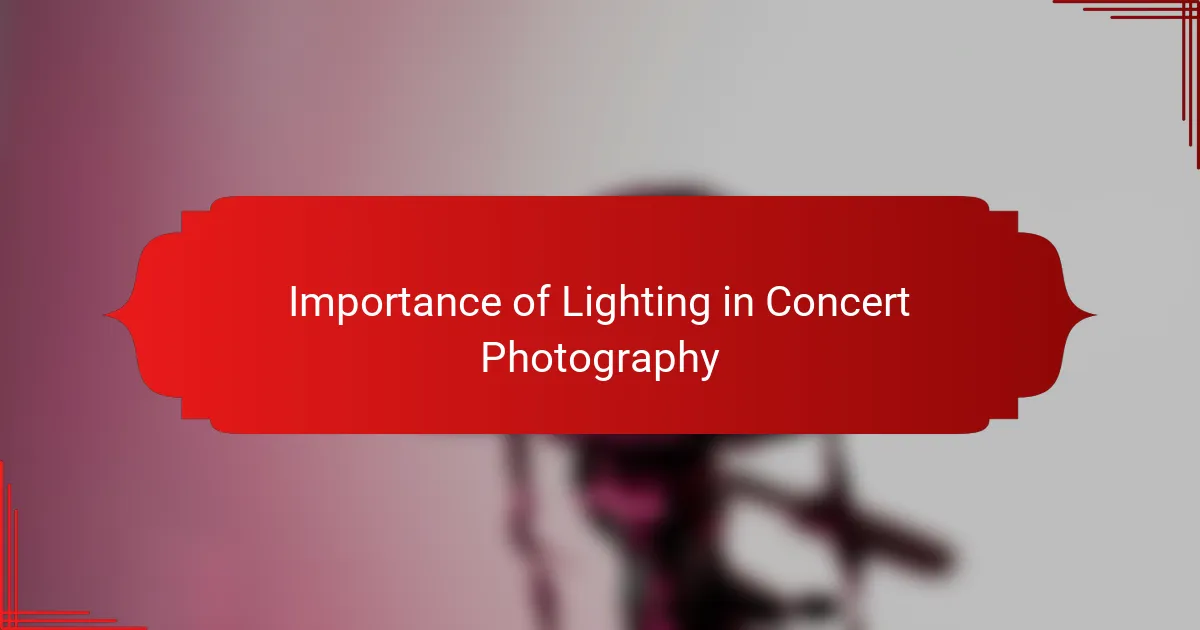
Importance of Lighting in Concert Photography
Lighting plays a crucial role in concert photography. It sets the mood and enhances the energy of the performance. I often find that the right lighting can turn an ordinary shot into something magical, capturing the artist’s emotions and the audience’s vibe.
When I photographed Janelle Monáe, for instance, the vibrant colors and dynamic lighting added depth to each image. The interplay between light and movement brought the concert to life, creating a visual narrative that resonated with the audience. I remember feeling an electric connection as her powerful performance illuminated the stage, and I had to capture that feeling in my photos.
In my experience, understanding how to manipulate light can change the outcome of a photograph dramatically. It’s about finding that sweet spot where the light complements the movement, creating a harmonious blend that draws viewers into the moment.
| Aspect | Impact on Photograph |
|---|---|
| Color | Sets mood and theme, creates an emotional tone |
| Intensity | Affects the focus and highlights key actions |
| Direction | Enhances depth and dimension, shapes the subject |
| Movement | Captures energy, adds dynamism to static images |
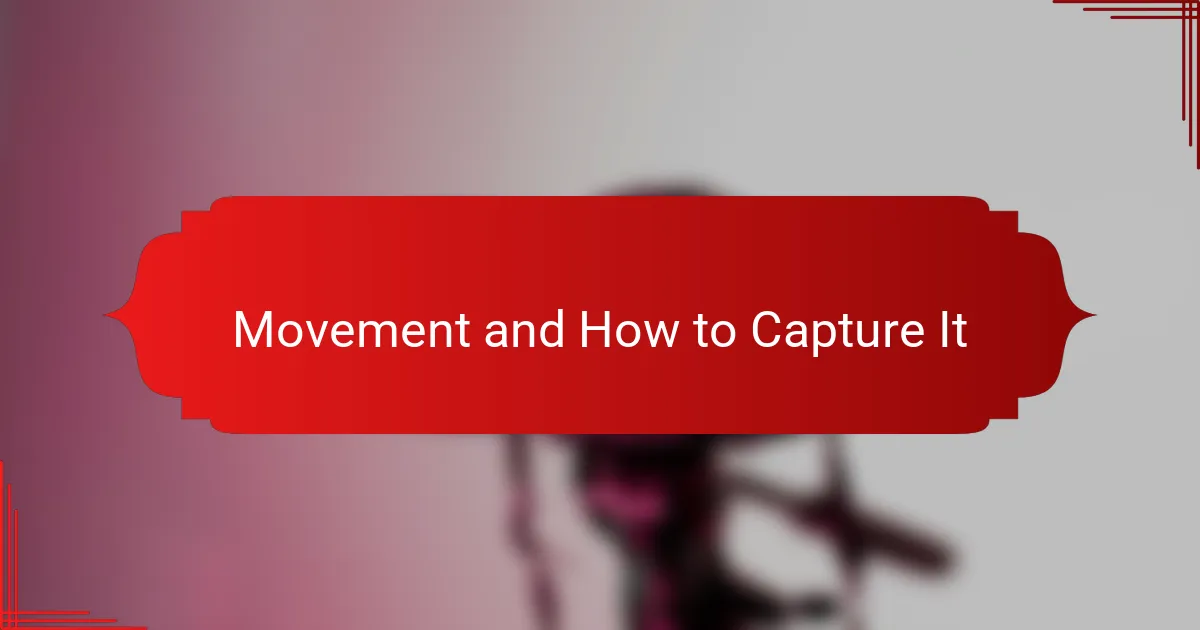
Movement and How to Capture It
Capturing movement in photography, especially during dynamic performances like Janelle Monáe’s concert, can be exhilarating. I remember the rush of setting my camera before the show began, knowing that the energy in the room would be electric. To embrace that motion, I employed faster shutter speeds to freeze those lively moments, ensuring that every jump, dance, and expression was vividly portrayed.
Let’s not forget the practical side. I often found that adjusting my aperture allowed for sharper photos even in low light conditions, a common situation at concerts. By balancing these settings, I could truly capture the essence of the movement—each pose, each swirl, resonating with the audience’s energy.
Here’s a comparison of different techniques I used while photographing movement:
| Technique | Description |
|---|---|
| Fast Shutter Speed | Freezes action for crisp images, ideal for high-energy moments. |
| Motion Blur | Creates a sense of dynamic movement, great for emphasizing rhythm. |
| Continuous Shooting | Takes multiple shots in quick succession to capture the perfect frame. |

Janelle Monáe’s Unique Stage Presence
Janelle Monáe’s stage presence is nothing short of captivating. When I first witnessed her live, I was immediately drawn in by the way she commands the stage with both grace and power. The combination of her dynamic choreography and the pulsating energy of the crowd created an atmosphere that felt electric, making every moment feel intimate and explosive at the same time.
Her performances are not just about the music; they tell a story woven through movement and light. I remember standing there, feeling the beat resonate in my chest, as she moved with such fluidity that it seemed as if her body was dancing with the very lights that illuminated her. In that moment, I truly understood how essential visual elements are to enhancing the emotional experience of a live show.
- Janelle effortlessly blends theatricality with her music, creating a holistic experience.
- Her choreography often reflects the themes of empowerment and freedom found in her songs.
- The lighting design during her performances complements her movements, creating a seamless visual narrative.
- Every aspect of her show feels intentional, inviting the audience to engage deeply with each moment.
- Monáe’s magnetic presence transforms the concert into a communal celebration, drawing everyone into the experience.
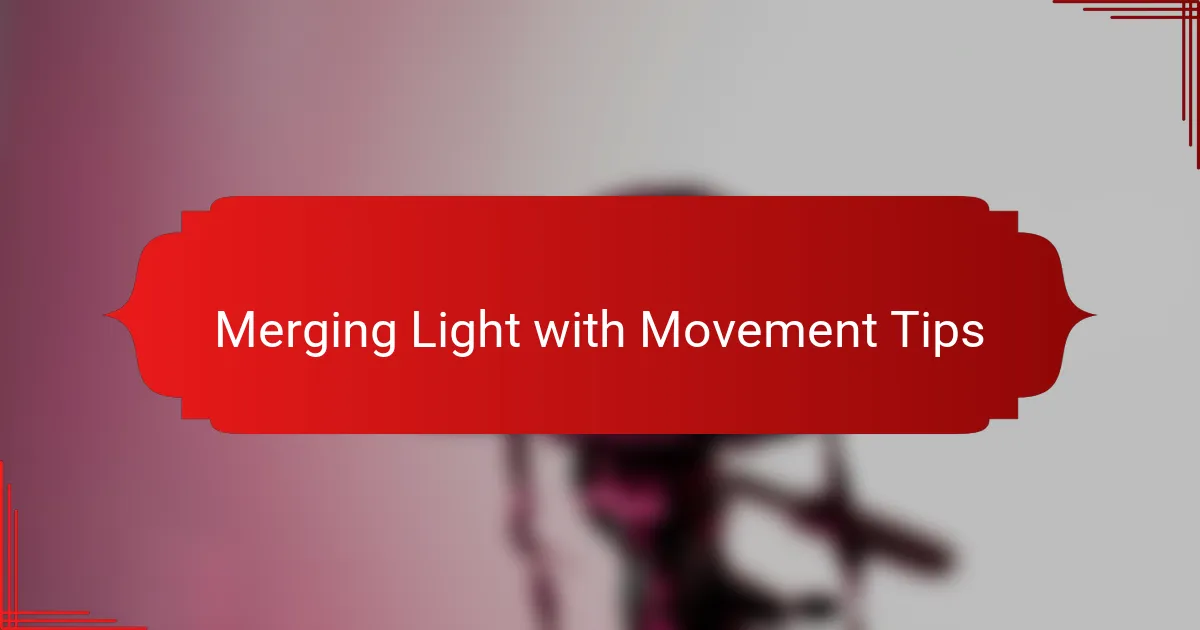
Merging Light with Movement Tips
When I captured the electrifying energy at Janelle Monáe’s concert, I realized that merging light and movement is all about timing and intuition. I found that anticipating the artist’s movements allowed me to adjust my lighting setup and camera settings, making every shot glow with vibrancy. The flicker of stage lights combined with Monáe’s dynamic choreography created moments that simply begged to be captured.
One of my favorite tricks was using backlighting to highlight her movements. This not only added an ethereal glow but also helped to define the shape of her silhouette, creating a striking contrast. Trust me, finding that perfect moment when her movement aligned with the lighting can feel like catching lightning in a bottle.
Here’s a quick comparison table to illustrate some techniques that worked well for me:
| Technique | Description |
|---|---|
| Backlighting | Creates silhouettes and emphasizes movement. |
| Spotlighting | Focuses attention on the performer, enhancing emotional impact. |
| Color Gels | Adds mood and depth to photos; enhances the overall aesthetic. |
